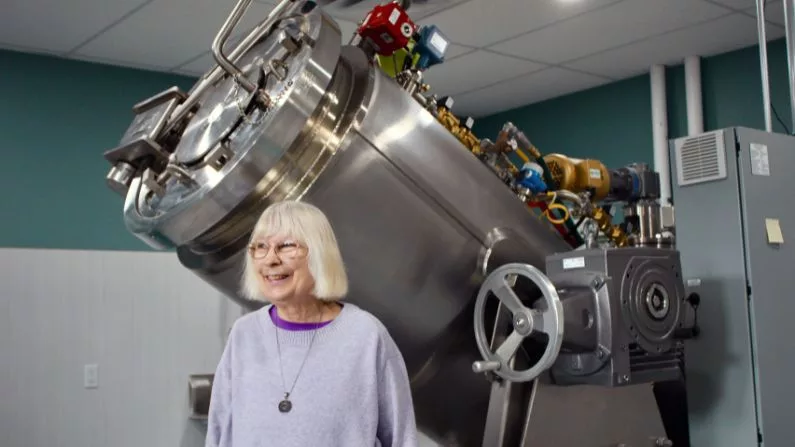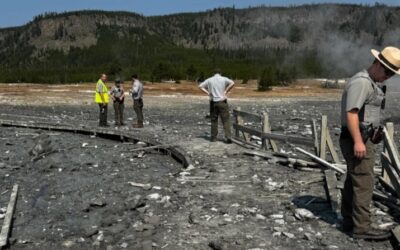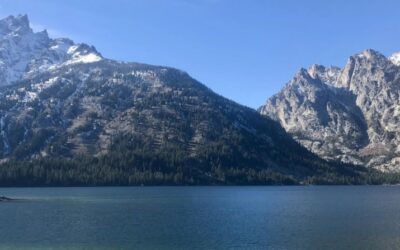Carlota Striffler isn’t scared to talk about death. Not even her own. At 73 years old, she’s making plans for what will happen after she’s gone.
“I’m a Virgo,” she said, “and so I like to plan things. I feel much less anxious about dying eventually knowing that I have this in place.”
Striffler is standing in the presence of the machine that will someday reduce her body to bones. At Goes Funeral Home in Fort Collins, Colo., she will eventually be cremated by a machine that uses water instead of fire. The new method, called alkaline hydrolysis, is growing in popularity, especially among those who see its low-emissions process as an environmentally-friendly alternative to traditional flame cremation.
For Striffler, it’s the next best thing to her original wish.
“I think what I would have really liked, if it had been years ago, would have been to be taken up on a mountaintop and put on top of a platform, and just kind of go back to the elements that way,” Striffler said with a chuckle. “But they don’t let you do that anymore.”
As the child of a minister, Striffler spent a lot of time around funerals at an early age. She said that makes it easier for her to talk about plans for her own death, which she hopes will make things easier for her kids. Striffler first heard about water cremation in 2017, when she used it for her cat, Lily.
“It just felt better putting her back into the earth that way,” she said. “I’m not sure why.”
How it works
The alkaline hydrolysis machine itself is an imposing metal cylinder, a shiny silver tube with heavy metal fittings.
“The equipment looks rather futuristic,” said Chris Goes, who owns the funeral home, “lots of dials and valves and gauges and water inlets and water outlets. Just everything that you would expect to see on a trip to Mars.”
Goes and another funeral director crank open the machine, twisting a gleaming wheel to unseal a round metal door that looks like a cartoon bank vault. Inside, they explain, a body is loaded into a metal cage. Then, it’s showered with a mix of water and potassium hydroxide, a type of lye that is often used to manufacture soap.
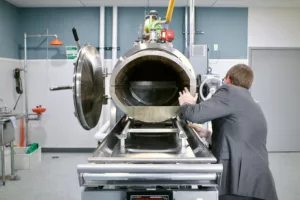
Ren Scherling, a funeral director at Goes Funeral Home, demonstrates the loading process for water cremation. The machine uses water and potassium hydroxide to reduce a body to bones, a process called alkaline hydrolysis. (Alex Hager / KUNC)
The process takes anywhere from three to 14 hours, and after it’s done, all that’s left are bones. From there, a funeral director puts the bones in an oven – the type that wouldn’t be out of place in a commercial kitchen – and dries them out. Afterwards, the bones are reduced to a mix of ash and fragments that’s similar to those produced by flame cremation, then turned over to the family of the deceased. However, families also get a glass jar of “sterile effluent,” water that’s left over from the alkaline hydrolysis process and sometimes used to water a garden or a tree.
The differences go beyond the type of remains left over. Ren Scherling, a funeral director at Goes, said he was first struck by the sound.
“It’s really no louder than a dishwasher at home,” he said. “It’s so, so, so quiet.”
A few rooms over, it’s easy to hear the difference. An old-school flame crematory roars as blowers bring the air to about 1,700 degrees fahrenheit. By comparison, the alkaline hydrolysis machine heats water to about 300 degrees.
The process uses about 300 gallons of water to process a body, which is roughly equivalent to the average household’s daily water use. That water, along with remnants of the human flesh it washes away, is flushed into municipal water pipes, meaning that Goes had to get a number of permits from local authorities before getting the machine online.
A small but growing trend
Water cremation is a relatively new technology. The process was first conceived in the late 1800s, but has only picked up steam as a commercially-available method for human cremation in the past two decades.
Units like the one at Goes Funeral Home cost $250,000, substantially more than the $100,000 price tag on a flame crematory. That difference makes it a costlier option for those who choose it for themselves and loved ones. At Goes, water cremation is $3,180, while flame cremation costs $2,180.
That cost seemed justified for Lee Christian, a Fort Collins resident who chose water cremation for his father’s funeral service.
“He would have liked to have been different than all of his relatives before,” Christian said.
Christian’s dad, Ed, died at 90 in January. He spent more than three decades working as a ranger for the National Parks Service, so his family put the cremated remains in one of his old ranger hats.
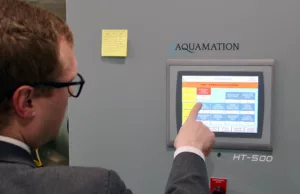
Ren Scherling uses a touchscreen on an alkaline hydrolysis machine at Goes Funeral Home. “It’s really no louder than a dishwasher at home,” he said. “It’s so, so, so quiet.” Alex (Hager / KUNC)
“I think if he saw this machine” Christian said, “He would have certainly been in approval. You bet he would have. He said, ‘After I’m gone, I’m gone.’”
Christian is part of a small but growing group choosing water cremation. Alkaline hydrolysis is legal in 25 states, but only practiced in 15, according to Barbara Kemmis, executive director of the Cremation Association of North America. There are more than 3,400 flame crematories nationwide, and only about 100 practitioners of alkaline hydrolysis, according to Kemmis.
“It’s hard to imagine, but it’s happened faster than anyone could have predicted, that we’ve gotten to 100 practitioners,” Kemmis said. “Will it ever overtake flame cremation? That’s kind of hard to imagine at this time.”
Alkaline hydrolysis only makes up a tiny fraction of all cremations each year. In 2021, there were roughly 2 million cremations across the country, and fewer than 1% of them were done by alkaline hydrolysis. Colorado, Utah, Nevada and Wyoming all have active practitioners. Wyoming and Kansas have legalized the method but don’t have anyone offering it as a funeral option.
“Perhaps it’s more quickly adopted in Colorado because I see Western states, Colorado included, being very interested in new forms of disposition,” Kemmis said, “and perhaps leading the rest of the country on environmental conscious death care choices.”
The reduced environmental impact was a major factor for Carlota Striffler. She liked the idea of a machine with fewer emissions into the atmosphere. And water, she said, sounded “more soothing” than flames.
“It isn’t a frightening looking piece of equipment to me,” Striffler said, “and by the time I’m ready for it, I’m not going to be looking at it anyway.”
This story is part of ongoing coverage of the Colorado River, produced by KUNC in Colorado and supported by the Walton Family Foundation. KUNC is solely responsible for its editorial coverage.

